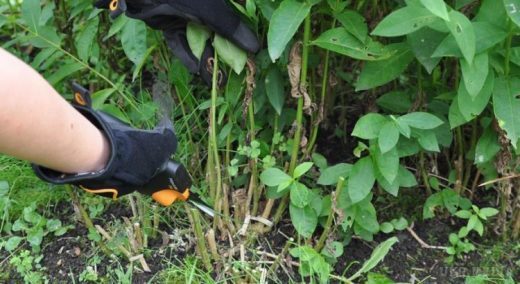Holiday season. Tips that will save you time

2017-10-17 22:22
Holiday season. Tips that will save you time
Prune perennials.

Sign up for news “UkrMedia” in Facebook, Twitter or Google+
Need fall be required to trim perennial flowers or it can be done in the spring?
No hard and fast rules on this subject do not exist. Cut withering aerial part of perennial herbaceous plant in the fall and in the spring, as you prefer. But practice shows that, taking into account some reasons, you can save time and simplify your life.
What to do with perennials in fall
Recommendation
Garden plants
Better crop
Phlox (paniculata and spotted), iwanicki, daylilies, irises, peonies, colorful, Solomon’s seal, the highlanders, basiletti, Echinacea, ferns (kochevenko, simonici, mnogoletniki, osmunda), gelenium, orbanici, monarda
Can be left until spring
Astilbe, perennial asters, veronicastrum, tall sedums, grasses (miscanthus, Calamagrostis, molinia, Spartina), liatris,
It is recommended to crop to avoid self-seeding
Posconnika, Angelica, goldenrod, sagalowsky, Mordovskiy
Do not touch
Hosta, hellebore, geranium blood-red, badani, ferns (cyrtomium, litovice, Derbenko), plant, Epimedium (Colchis, grandiflora, valiska), gravitate

7 the arguments “for” and “against”
“For”
1. All diseased plants must be cut in the fall, so they do not become a source of infection next year.
2. The leaves and stems of some plants are easier to remove at the end of the season. During the winter they become too hard or (gelenium), or fibrous (beardless irises), so spring pruning will take much more time.
3. Some perennials that could decorate the area in winter, being cut, gives a hearty self-seeding. To for next season don’t have to weed out unwanted seedlings around the garden, it is better to trim them in the fall.
4. The dried plants in the flowerbed seem to be attractive not for everyone. Also among the vacationers many those who comes to the site all winter. In these cases, to carry the pruning of perennials in the spring for aesthetic reasons makes no sense.
“Vs”
5. Pruning of plants with sturdy stems that are showy after flowering (veronicastrum, tall sedums, large grains, etc), you can leave for spring: covered with frost and covered with snow they will be a wonderful decoration of the garden in winter. For countries with warmer climates the list of perennials is quite large: it includes, for example, monarda, Echinacea, etc.
6. Beloved by many gardeners hosts do not require pruning. Over the winter from leaves practically nothing, and a landing spot can be determined only by the dried-up stalks that spring is very easy to remove. And it concerns not only small and medium, and even large varieties.
7. Herbaceous perennials with evergreen leaves and gimnazistki can not be cropped. It weakens plants and can lead to their death. Gradually the dying old leaves and remove as necessary the following season. With the exception of Epimedium: it is better to trim immediately after the snow melts, the leaves wither not spoil the look of flowering plants.
Cut – into the fire!
You can throw on the compost pile the trimmed stems of flowers patients?
Impossible. Pathogens, such as Phytophthora or root rot, the rest on stalks and leaves remain viable for several years. Sending such plant residues in the compost and in the future, using it, you’ll just help pathogens to spread around the area. After cutting the aerial part of infected plants must be dried and burned and the ashes can be safely used as an autumn top dressing is a good source of potassium.
So much easier to do with a very rough and tough stems. Before composting, of course, you can chop, but if not in the household garden shredder, it will take a lot of time. Much easier and faster to send them into the fire.











